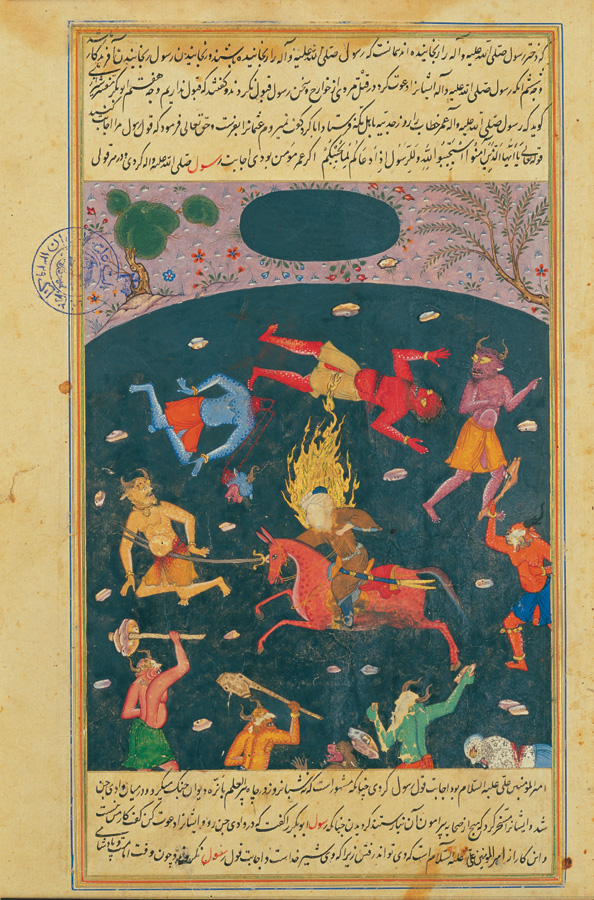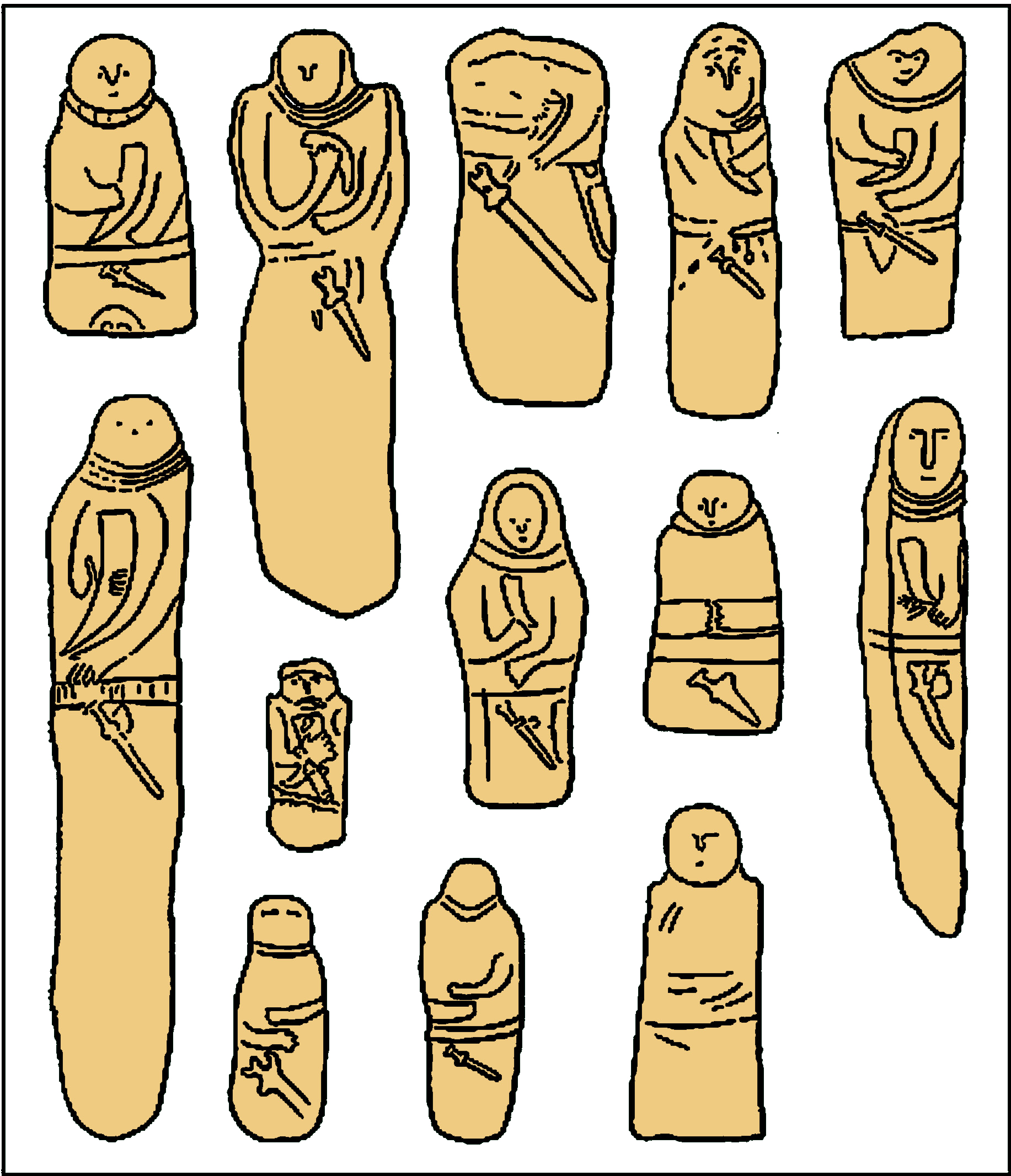|
Daiva
A daeva (Avestan: 𐬛𐬀𐬉𐬎𐬎𐬀 ''daēuua'') is a Zoroastrian supernatural entity with disagreeable characteristics. In the Gathas, the oldest texts of the Zoroastrian canon, the ''daeva''s are "gods that are (to be) rejected". This meaning is – subject to interpretation – perhaps also evident in the Old Persian "''daiva'' inscription" of the 5th century BCE. In the ''Younger Avesta'', the ''daeva''s are divinities that promote chaos and disorder. In later tradition and folklore, the ''dēw''s (Zoroastrian Middle Persian; New Persian ''div''s) are personifications of every imaginable evil. Over time, the Daeva myth as Div became integrated to Islam. ''Daeva'', the Iranian language term, shares the same origin of "Deva" of Hinduism. While the word for the Vedic spirits and the word for the Zoroastrian entities are etymologically related, their function and thematic development is altogether different. Originally, the term was used to denote beings of cultural folk ... [...More Info...] [...Related Items...] OR: [Wikipedia] [Google] [Baidu] |
Div (mythology)
Div or dev (Persian: ': ) (with the broader meaning of demons or fiends) are monstrous creatures within Middle Eastern lore. Most of their depictions derive from Persian mythology, integrated to Islam and spread to surrounding cultures including Armenia, Turkic countries and Albania. Although they are not explicitly mentioned within canonical Islamic scriptures, their existence was well accepted by most Muslims just like that of other supernatural creatures. They exist along with jinn, '' peri'' (fairies) and '' shayatin'' (devils) within South- and Central Asia demon-beliefs. They are described as having a body like that of a human, only of gigantic size, with two horns upon their heads and teeth like the tusks of a boar. Powerful, cruel and cold-hearted, they have a particular relish for the taste of human flesh. Some use only primitive weapons, such as stones: others, more sophisticated, are equipped like warriors, wearing armour and using weapons of metal. Despite their unc ... [...More Info...] [...Related Items...] OR: [Wikipedia] [Google] [Baidu] |
Zoroastrianism
Zoroastrianism is an Iranian religions, Iranian religion and one of the world's History of religion, oldest organized faiths, based on the teachings of the Iranian peoples, Iranian-speaking prophet Zoroaster. It has a Dualism in cosmology, dualistic cosmology of good and evil within the framework of a Monotheism, monotheistic ontology and an eschatology which predicts the ultimate conquest of evil by good. Zoroastrianism exalts an uncreated and benevolent deity of wisdom known as ''Ahura Mazda'' () as its supreme being. Historically, the unique features of Zoroastrianism, such as its monotheism, messianism, belief in Free will in theology, free will and Judgement (afterlife), judgement after death, conception of heaven, hell, Angel, angels, and Demon, demons, among other concepts, may have influenced other religious and philosophical systems, including the Abrahamic religions and Gnosticism, Southern, Eastern and Northern Buddhism, Northern Buddhism, and Ancient Greek philosoph ... [...More Info...] [...Related Items...] OR: [Wikipedia] [Google] [Baidu] |
Old Persian
Old Persian is one of the two directly attested Old Iranian languages (the other being Avestan language, Avestan) and is the ancestor of Middle Persian (the language of Sasanian Empire). Like other Old Iranian languages, it was known to its native speakers as (Iranian).''cf.'' , p. 2. Old Persian appears primarily in the inscriptions, clay tablets and seal (device), seals of the Achaemenid dynasty, Achaemenid era (c. 600 BCE to 300 BCE). Examples of Old Persian have been found in what is now Iran, Romania (Gherla), Armenia, Bahrain, Iraq, Turkey and Egypt, with the most important attestation by far being the contents of the Behistun Inscription (dated to 525 BCE). Recent research (2007) into the vast Persepolis Fortification Archive at the Oriental Institute at the University of Chicago unearthed Old Persian tablets, which suggest Old Persian was a written language in use for practical recording and not only for royal display. Origin and overview As a written language, Old ... [...More Info...] [...Related Items...] OR: [Wikipedia] [Google] [Baidu] |
Proto-Indo-European Language
Proto-Indo-European (PIE) is the reconstructed common ancestor of the Indo-European language family. Its proposed features have been derived by linguistic reconstruction from documented Indo-European languages. No direct record of Proto-Indo-European exists. Far more work has gone into reconstructing PIE than any other proto-language, and it is the best understood of all proto-languages of its age. The majority of linguistic work during the 19th century was devoted to the reconstruction of PIE or its daughter languages, and many of the modern techniques of linguistic reconstruction (such as the comparative method) were developed as a result. PIE is hypothesized to have been spoken as a single language from 4500 BC to 2500 BC during the Late Neolithic to Early Bronze Age, though estimates vary by more than a thousand years. According to the prevailing Kurgan hypothesis, the original homeland of the Proto-Indo-Europeans may have been in the Pontic–Caspian steppe of ... [...More Info...] [...Related Items...] OR: [Wikipedia] [Google] [Baidu] |
Turkish Language
Turkish ( , ), also referred to as Turkish of Turkey (''Türkiye Türkçesi''), is the most widely spoken of the Turkic languages, with around 80 to 90 million speakers. It is the national language of Turkey and Northern Cyprus. Significant smaller groups of Turkish speakers also exist in Iraq, Syria, Germany, Austria, Bulgaria, North Macedonia, Greece, the Caucasus, and other parts of Europe and Central Asia. Cyprus has requested the European Union to add Turkish as an official language, even though Turkey is not a member state. Turkish is the 13th most spoken language in the world. To the west, the influence of Ottoman Turkish—the variety of the Turkish language that was used as the administrative and literary language of the Ottoman Empire—spread as the Ottoman Empire expanded. In 1928, as one of Atatürk's Reforms in the early years of the Republic of Turkey, the Ottoman Turkish alphabet was replaced with a Latin alphabet. The distinctive characteristics of the Turk ... [...More Info...] [...Related Items...] OR: [Wikipedia] [Google] [Baidu] |
William Thomas Beckford
William Thomas Beckford (29 September 1760 – 2 May 1844) was an English novelist, art collector, patron of decorative art, critic, travel writer, plantation owner and for some time politician. He was reputed at one stage to be England's richest commoner. The son of William Beckford (politician), William Beckford and Maria Hamilton, daughter of the Hon. George Hamilton (died 1775), George Hamilton, he served as a Member of Parliament for Wells (UK Parliament constituency), Wells in 1784–1790 and Hindon (UK Parliament constituency), Hindon in 1790–1795 and 1806–1820. Beckford is remembered for a Gothic novel ''Vathek'' (1786), for building the lost Fonthill Abbey in Wiltshire and Lansdown Tower ("Beckford's Tower") in Bath, and for his art collection. Biography Beckford was born in the family's London home at 22 Soho Square on 29 September 1760. At the age of ten, he inherited a fortune from his father William Beckford (politician), William Beckford, who had been twice a ... [...More Info...] [...Related Items...] OR: [Wikipedia] [Google] [Baidu] |
Scythian Religion
The Scythian religion refers to the mythology, ritual practices and beliefs of the Scythian cultures, a collection of closely related ancient Iranian peoples who inhabited Central Asia and the Pontic–Caspian steppe in Eastern Europe throughout Classical Antiquity, spoke the Scythian languages, Scythian language (itself a member of the Eastern Iranian languages, Eastern Iranian languages, Iranian language family), and which included the Scythians, Scythians proper, the Cimmerians, the Sarmatians, the Alans, the Sindi (people), Sindi, the Massagetae and the Saka. The Scythian religion is assumed to have been related to the earlier Proto-Indo-Iranian religion as well as to contemporary Eastern Iranian and Ossetian mythology, Ossetian traditions, and to have influenced later Slavic mythology, Slavic, Hungarian mythology, Hungarian and Turkic mythology, Turkic mythologies. Development The Scythian religion was of Ancient Iranian religion, Iranian origin. The religion was influenced ... [...More Info...] [...Related Items...] OR: [Wikipedia] [Google] [Baidu] |
Avestan
Avestan (), or historically Zend, is an umbrella term for two Old Iranian languages: Old Avestan (spoken in the 2nd millennium BCE) and Younger Avestan (spoken in the 1st millennium BCE). They are known only from their conjoined use as the scriptural language of Zoroastrianism, and the Avesta likewise serves as their namesake. Both are early Eastern Iranian languages within the Indo-Iranian language branch of the Indo-European language family. Its immediate ancestor was the Proto-Iranian language, a sister language to the Proto-Indo-Aryan language, with both having developed from the earlier Proto-Indo-Iranian language; as such, Old Avestan is quite close in both grammar and lexicon to Vedic Sanskrit, the oldest preserved Indo-Aryan language. The Avestan text corpus was composed in the ancient Iranian satrapies of Arachosia, Aria, Bactria, and Margiana, corresponding to the entirety of present-day Afghanistan as well as parts of Tajikistan, Turkmenistan, and Uzbekistan. The ... [...More Info...] [...Related Items...] OR: [Wikipedia] [Google] [Baidu] |
Georgian Language
Georgian (, , ) is the most widely-spoken Kartvelian language, and serves as the literary language or lingua franca for speakers of related languages. It is the official language of Georgia and the native or primary language of 87.6% of its population. Its speakers today number approximately four million. Classification No claimed genetic links between the Kartvelian languages and any other language family in the world are accepted in mainstream linguistics. Among the Kartvelian languages, Georgian is most closely related to the so-called Zan languages (Megrelian and Laz); glottochronological studies indicate that it split from the latter approximately 2700 years ago. Svan is a more distant relative that split off much earlier, perhaps 4000 years ago. Dialects Standard Georgian is largely based on the Kartlian dialect. [...More Info...] [...Related Items...] OR: [Wikipedia] [Google] [Baidu] |


_p012_BAKU%2C_FIRE_TEMPLE_(cropped).jpg)







_-_Georgian_language_alphabet.png)